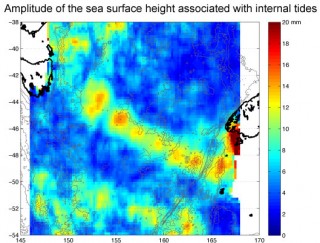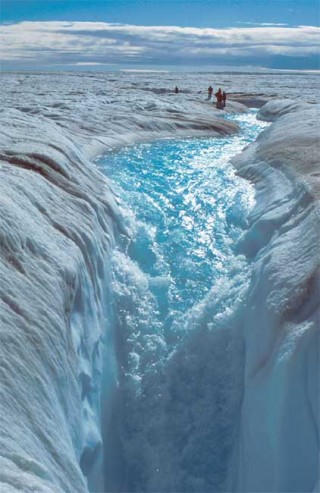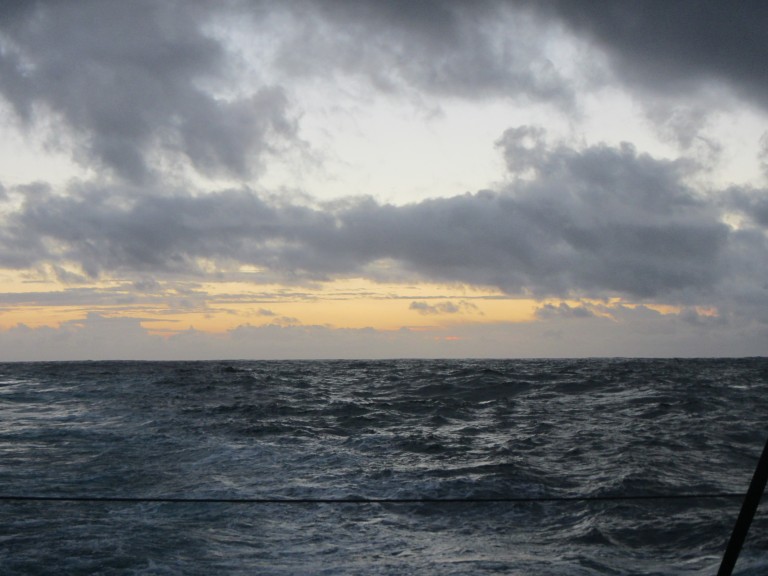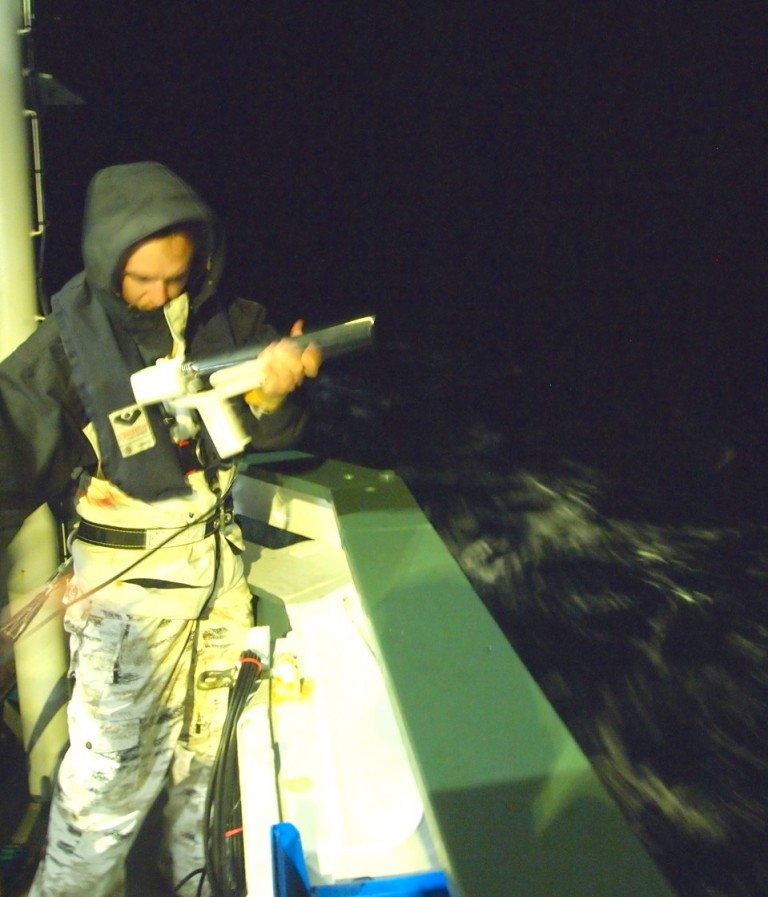Last week, the great dark turquoise waves rolling past the ship in the dark looked impressive, at 15 feet tall or more, but they are nothing compared to their giant cousins below. As you know, the internal tide we are chasing across the surging Tasman Sea is hundreds of feet tall, heaving water deep below the ocean’s surface up and down by over 100 feet every twelve hours.


Waves from outer space
These waves may not be visible to us, standing on the deck of Falkor, but that doesn’t mean we don’t know roughly where they are. Satellite altimeters floating in the blackness of space have been measuring the height of the sea surface for the past 25 years. They can track the motion of the ocean caused by the tide and by the internal tidal beam that we are hunting; the surface of the ocean moves up and down by only a few inches, but that’s enough for a satellite!
In fact, satellite altimeters can even measure the gradual sea-level rise caused by global warming, currently estimated to be about 3 millimeters per year, about the height of two stacked pennies. This may not sound like much, but some small island nations may already be suffering from the effects of rising ocean levels, including some of the South Pacific islands near Australia. So what causes sea-level rise, and what does any of this have to do with T-TIDE?
Expanding ocean
Let’s start with some simple physics, because hey, I love simple physics! If you want sea levels to rise, you need more ocean, which means you need a bigger volume of ocean water. There are two ways to increase volume – increase mass or lower density – and each one contributes about half of the total observed sea-level rise.
The first thing you can do to raise sea levels, if you are really keen on having a lovely ocean beach near your house in central Oregon, is to melt some ice to increase the total mass of water in the ocean. Sea-ice won’t work, because it’s already floating, but the Antarctic and Greenland ice sheets are perfect. Greenland alone has been losing hundreds of cubic kilometers of melt water – that’s like 100 times the amount of water in Lake Washington – each year! Surface waves roll past the Falkor at sunset, giving little clue to the 100 meter high wave below.

The second way to increase sea levels, and turn Seattle into an expensive island chain, is to add a lot of heat to the ocean. Warm salt water is less dense than cold salt water, which means it expands and takes up more volume. This is called thermal expansion. Thermal expansion doesn’t happen equally everywhere in the ocean, because heat isn’t added evenly everywhere.

All mixed up
And that is where T-TIDE comes in! As we’ve mentioned here before, one reason we are studying the internal tide is to better understand how internal waves cause mixing, so we can improve how that mixing is integrated into climate models. This is all mixed up (heh) with sea-level rise and thermal expansion because mixing is really good at moving heat through the ocean.
Heating the ocean is not as simple as warmer oceans = nicer swimming (although being from Seattle, I wish it worked like that). Ocean locations with more heat being added to the surface (like the sunny tropics where I secretly suspect the Revelle has been hanging out based on their photos) will experience more sea-level rise unless that heat is mixed or transported elsewhere. And while heat carried down into the deeper ocean may seem good in the short run, it also means that ocean water near the surface absorbs even more heat, resulting in higher seas in the long run.
The good news is that every day we learn more about the oceans and the Earth’s complicated climate, we get better at predicting what will happen in the future. That means we can plan for and adapt to a changing planet. So hopefully no one will have to be up to their ankles in ocean waves unless they really want to be!
